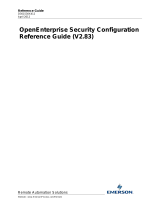
Fade Out ...........................................................................................................................................................................15
Improvements to PROGRAM Mode...................................................................................... 16
KEYGROUP Type Program .........................................................................................................16
Creating a Keygroup Program ......................................................................................................................................... 16
Adding Keygroups to a Keygroup Program .................................................................................................................... 17
Sample Layer Crossfade ..................................................................................................................................................17
Panning Individual Samples ............................................................................................................................................18
Tuning and Root Note......................................................................................................................................................18
Keytracking ......................................................................................................................................................................18
Keygroup Tune and Transpose ........................................................................................................................................18
Pitchbend / Modwheel / Aftertouch.................................................................................................................................19
Improvements to Sample Programs..........................................................................................19
Per-Sample Panning......................................................................................................................................................... 19
Multi Pad Edit ..................................................................................................................................................................19
Program Tune................................................................................................................................................................... 20
Envelope Quick Access ..............................................................................................................20
Additional Improvements .........................................................................................................20
Sample assignment........................................................................................................................................................... 20
Improvements to EFFECT Mode .......................................................................................... 21
Copy / Paste / Swap Effect Settings .........................................................................................21
[F2] COPY .......................................................................................................................................................................21
[F3] PASTE...................................................................................................................................................................... 21
[F5] SWAP....................................................................................................................................................................... 21
Easy Effect List Navigation ............................................................................................................................................. 21
Improvements to DISK Mode................................................................................................ 22
Automatically Create Programs from a Folder...........................................................................22
Create A New Program When Loading A Sample .......................................................................22
Other Improvements ................................................................................................................23
Sample Loading ............................................................................................................................................................... 23
Auditioning Synth Programs............................................................................................................................................ 23
Quick File Browser Movements ...................................................................................................................................... 23
Improvements to Q-LINK Mode ............................................................................................ 24
FX Q-Links.................................................................................................................................24
Configuring the FX Q-LINK Sliders & Knobs ..............................................................................................................24
Default Q-LINK Mode ................................................................................................................25
Bypassing Default Q-LINK ............................................................................................................................................. 25
Improvements to MIDI/SYNC Mode...................................................................................... 26
Select Active Track with a Program Change ..............................................................................26
Improvements to OTHER Mode............................................................................................ 27
Program Audition Note .............................................................................................................27
New Footswitch Options: ..........................................................................................................27
NEXT TRACK ................................................................................................................................................................ 27
PREV TRACK .................................................................................................................................................................27
NEXT SEQUENCE ......................................................................................................................................................... 27
PREV SEQUENCE.......................................................................................................................................................... 27
INC ................................................................................................................................................................................... 27
DEC..................................................................................................................................................................................27





















